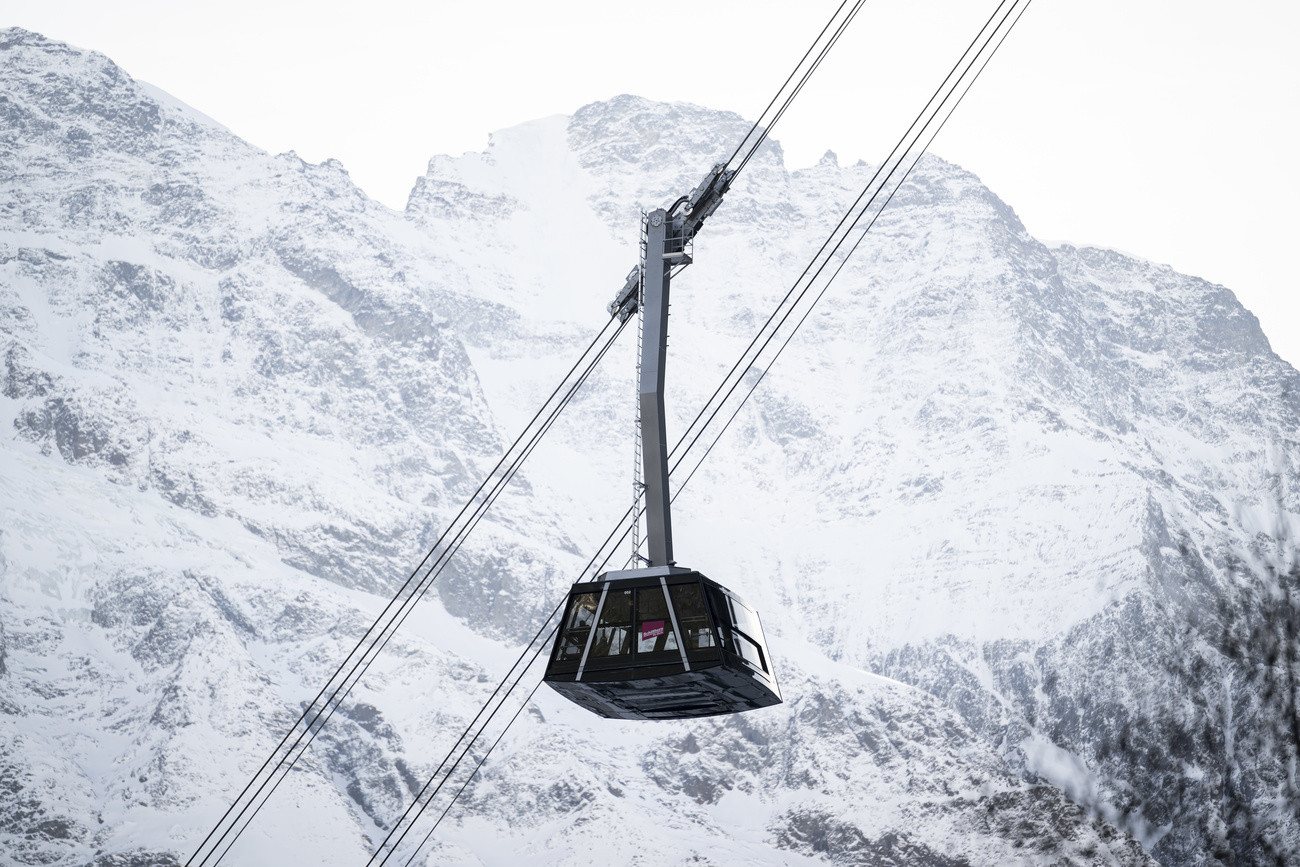Ethiopian hijacker likely to face prison

The co-pilot who hijacked an Ethiopian Airlines passenger jet that landed early on Monday in Geneva will probably not be granted asylum by the Swiss authorities, but could face up to 20 years in jail if convicted.
The co-pilot took control of the plane, which was flying from Addis Ababa to Rome, while the pilot was taking a bathroom break, locking himself in the cockpit.
One passenger said the hijacker threatened to crash the plane if the pilot didn’t stop pounding on the locked door. Another said he was terrified “for hours” as the plane careened across the sky.
“It seemed like it was falling from the sky,” 45-year-old Italian Diego Carpelli said of the Boeing 767.
The jetliner carrying 200 passengers and crew took off from the Ethiopian capital on a flight to Milan and then Rome, but sent a distress message over Sudan that it had been hijacked, an Ethiopian official said. Once the plane was over Europe, two Italian fighter jets and later French jets were scrambled to accompany it.
The plane landed in Geneva at about 6 a.m. Swiss time. Officials said no one on the flight was injured and the hijacker was taken into custody after surrendering to Swiss police.
The Ethiopian hijacker, who was born in 1983, exited the cockpit window using a rope and gave himself up to police, announcing that he had commandeered the aircraft.

More
Unusual way to request asylum
The Swiss authorities initially thought the Ethiopian plane wanted to land in Geneva for emergency refueling before realising it was being hijacked, Geneva police spokesman Eric Grandjean said.
The plane was authorised to land by Skyguide, which is responsible for air traffic control in Switzerland, after the co-pilot told controllers that one of the aircraft’s engines had failed and that he was running low on fuel with just enough to remain skyborne for another 35 minutes.
After getting the go-ahead, he could have landed in Geneva at 5:30 a.m., but finally stayed up longer.
“If he didn’t land, it was because he was trying to negotiate his political asylum request,” said Skyguide spokesman Vladi Barrosa on Tuesday. “We didn’t know if he was telling the truth, but we had to assume he was.”
Skyguide’s air traffic controllers, who work round the clock, have the final say on aircraft movements. On Monday, the controller on duty was also the intermediary between the hijacker and a police negotiator.
The pilot was asked to land a second time to land when his fuel was down to 20 minutes, a suggestion he rejected according to Skyguide. Despite receiving no guarantees concerning his asylum request, he was forced to land though when he only had ten minutes of kerosene left and the risk of a crash was too great for any further delay.
Police escorted the passengers out of the jetliner one by one, their hands over their heads, and took them to waiting vehicles.
Geneva prosecutor Olivier Jornot said the co-pilot will be charged with taking hostages, a crime punishable by up to 20 years in prison in Switzerland. In Ethiopia, he could face up to 25 years in prison for the hijacking.
Jornot said the hijacker’s chances of winning asylum were slim. “Technically there is no connection between asylum and the fact he committed a crime to come here,” he said. “But I think his chances are not very high.”
The Geneva cantonal minister in charge of security, Pierre Maudet, added that “his application hadn’t been made in the right conditions to receive a favourable response”.
It wasn’t immediately clear why the hijacker chose Switzerland, where Swiss voters recently demanded curbs on immigration. However, Italy has a reputation among many Africans as not being hospitable to asylum seekers.
According to Federal Migration Office statistics, 843 Ethiopians were in the process of seeking asylum in Switzerland in 2013, and 246 new applications for asylum from Ethiopia were submitted last year.
The Federal Prosecutors’ Office has taken over the case.
Scrambling
While Italian and French military aircraft were scrambled to accompany the plane, no Swiss fighter jets were deployed because Switzerland does not have round-the-clock fighter jet intervention capability.
Air force spokesman Laurent Savary told Geneva’s Le Temps newspaper that Switzerland did not have fighter jets available 24 hours per day because of budgetary constraints and noise restrictions.
Switzerland’s air bases also only operate between 8 a.m. and 12 p.m. and from 1.30 p.m. to 5 p.m., except on Monday nights when training exercises are held, a fact that was met with some irony on Monday.
Foreign invaders, be advised: Swiss Air Force not combat-ready outside office hours http://t.co/xKnaF691rzExternal link
— Mathieu von Rohr (@mathieuvonrohr) February 17, 2014External linkLast week, the defence ministry had warned, in the context of an upcoming vote on the purchase of new jets, that by 2016 Switzerland would no longer be able to guarantee round-the-clock combat readiness with available aircraft.
According to Le Temps, the ministry claims that Swiss jets could have taken off to escort the hijacked plane if sufficient warning had been given. It says that there is a new project that aims provide protection 24-hour for Swiss airspace.

In compliance with the JTI standards
More: SWI swissinfo.ch certified by the Journalism Trust Initiative









You can find an overview of ongoing debates with our journalists here . Please join us!
If you want to start a conversation about a topic raised in this article or want to report factual errors, email us at english@swissinfo.ch.